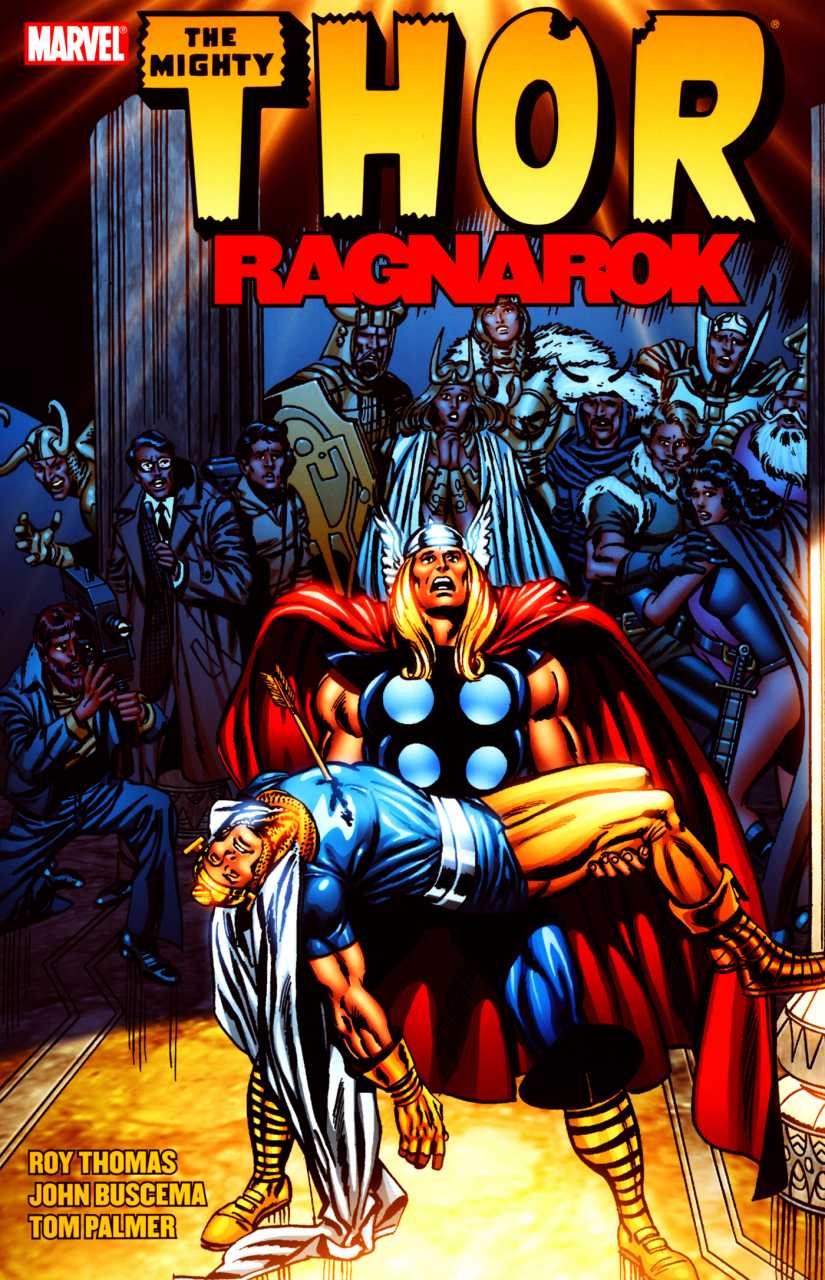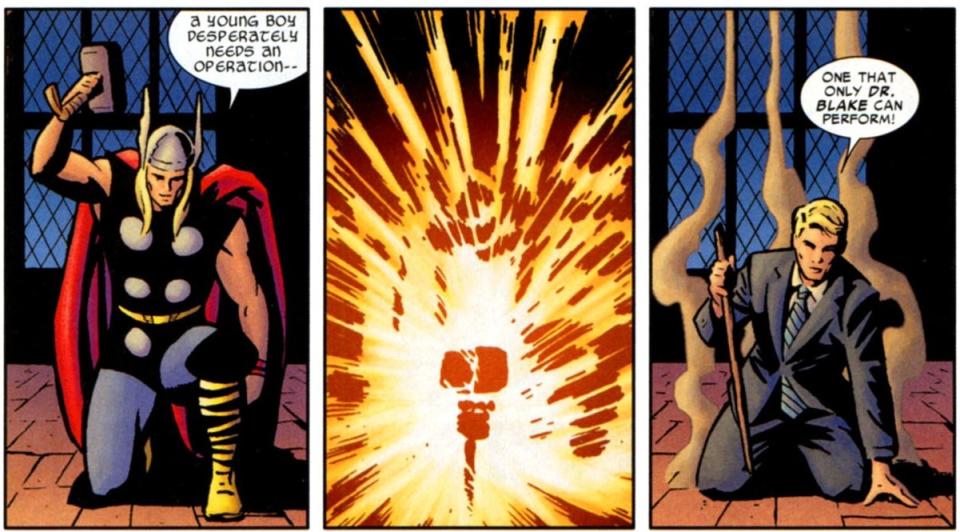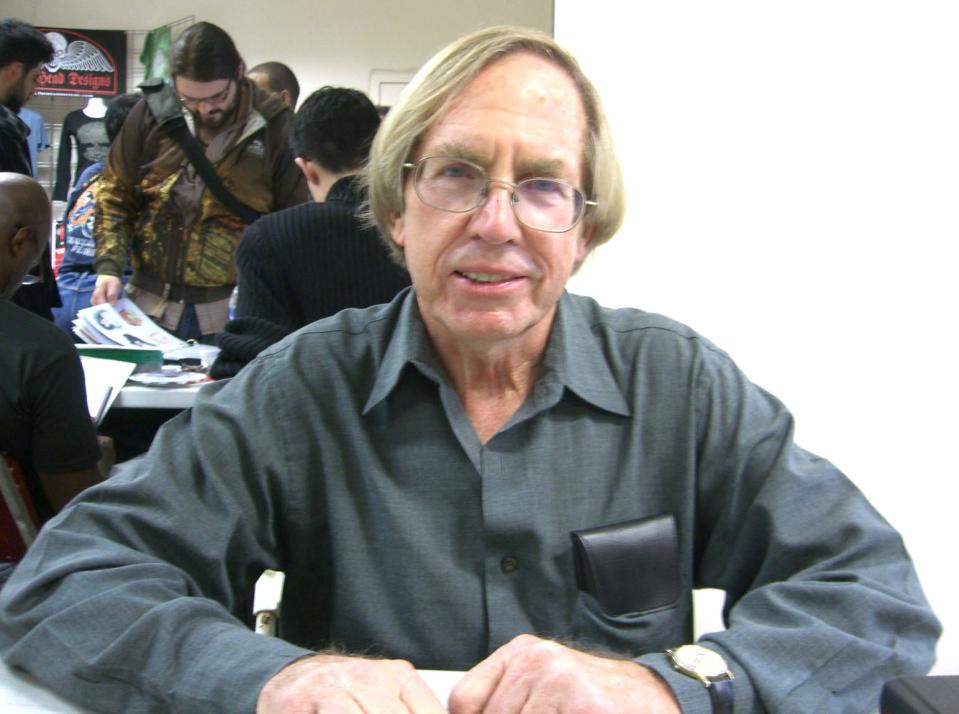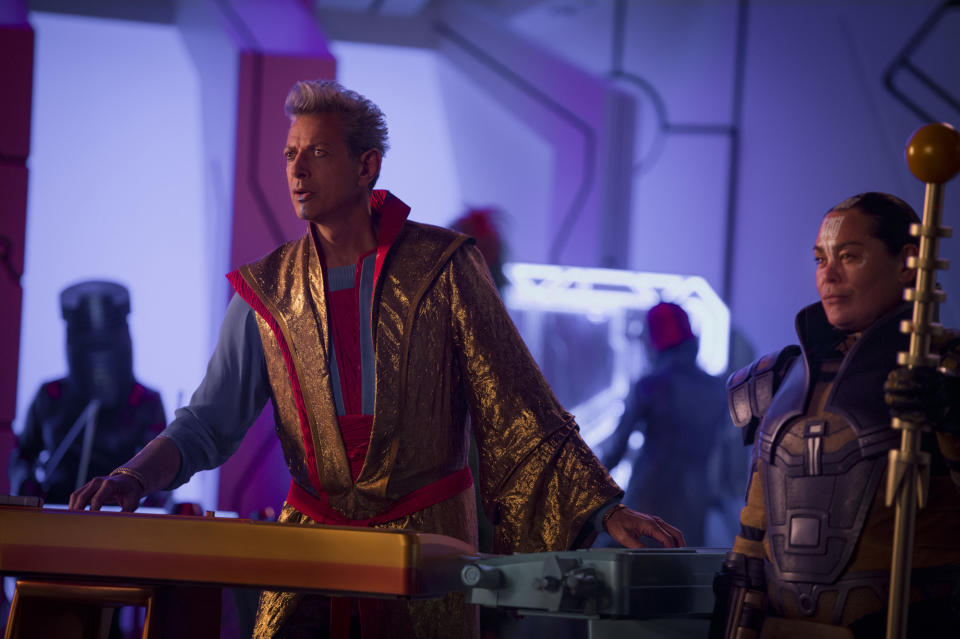'Thor' from page to screen: Marvel legend Roy Thomas traces differences between comics and 'Ragnarok'

The apocalypse hits Asgard for the first time in the Marvel Cinematic Universe in the Mighty Thor’s third solo adventure, Thor: Ragnarok, which premiered to thunderous box office numbers last week. But Ragnarok has visited the Thunder God’s native realm several times in comic-book form, including a six-issue 1978 story arc — currently available in trade paperback — penned by legendary Marvel writer and editor Roy Thomas. First joining the House of Ideas in 1965, Thomas worked alongside creative heavyweights like Stan Lee and Jack Kirby for 16 years. Thomas’s new book, The Marvel Age of Comics: 1961-1978, revisits that heady time and depicts the way characters like Thor evolved and changed as the Silver Age gave way to the Bronze Age.
Writers like Lee and Thomas steadily leaned into the underlying Norse mythology, taking Thor, who began as a fairly ordinary strongman superhero in his 1962 debut, off Earth to Asgard and worlds beyond. The Thor film series has notably followed a similar trajectory, with the fish-out-of-water terrestrial comedy that defined Kenneth Branagh’s 2011 franchise starter giving way to Taika Waititi’s intergalactic buddy comedy that pairs Thor with the Incredible Hulk.

When Yahoo Entertainment caught up with Thomas recently, he hadn’t yet seen Thor: Ragnarok but was eager to hear about how the film tackled material — and characters — he had firsthand experience with. “One of the reasons why I think that Thor hasn’t been considered one of the more successful [Marvel] film franchises is that it’s been so divorced from the Earth. Ragnarok may overcome that, but I think it would have been a good ingredient to get a few more human beings in there. At least they’ve got Bruce Banner!” We spoke with Thomas about Thor’s early comic-book adventures and the cosmic era of Marvel comics.
Yahoo Entertainment: In his early adventures, Thor was primarily an Earth-bound hero. Do you recall there being a conscious effort to keep him grounded, so to speak?
Roy Thomas: Yes, because at first there was just this guy who finds a hammer. It was a little while before he started having adventures, first with Odin and then spending a little time in Asgard. That gradually took over until the later ’60s, when they got rid of Jane Foster and the whole Donald Blake identity. I always preferred the earlier version in a way. I liked it when he had this alternate life as Don Blake. He was just another superhero that way, you know? As a matter of fact, he was a more standard superhero than Marvel had at the time. He was this strong, Superman-ish character, and not a monster like the Thing or the Hulk. He also wasn’t created primarily to be a tortured character like Spider-Man. He had a limp as Donald Blake, but that was about it. Stan has never said this, but Thor might have been a reaction to the Hulk and the Fantastic Four.

When you started writing Thor, were you more interested in the emerging Asgard material or what he was doing on Earth?
I just wanted to see a mix. I wanted the Asgard stuff — I liked that. In fact, when I was given the series in the late ’70s, the first thing I did was retell a Norse myth that I used to go into the Ragnarok stuff. So I always wanted that to be a portion of the story. I just liked the idea of having more humans in it. That’s why I had a whole sequence in which Thor brought a film crew to Asgard, and it just so happens that they’re going to be filming the end of the world. And one of those guys turned out to be myth-based like Thor, so I got to play around with that a little bit. I would have liked to see something like that in the movie! But I always wanted to see human beings in it, and I also wanted to see Asgard. It really all depended what the stories were. There wasn’t any one inevitable way to go, and I don’t think Stan or Jack [Kirby] had anything in mind when they started it. They just winged it and saw where it went from time to time, and gradually that’s the way it came out.
So it wasn’t a conscious choice to let the Earth-bound stories fall away?
Well, at some stage they had decided to not worry about the Earth so much because they had Earth in a lot of the other books. But on the other hand it was not like they ever said, “We’re not going back there.” They just followed whatever was interesting to them, and if it seemed to be selling.
What are your memories of the story meetings from that era?
We didn’t have story meetings! [Laughs] I mean, the story meetings were Stan talking to Jack on the phone. Or maybe I’d write out the plot without talking to the artist in advance, so I’d call him later and we’d talk it over. I remember Stan and John Romita had a meeting once right after Steve Ditko left to see where Spider-Man was going, because Stan hadn’t been really controlling that character’s destiny for the preceding years. So they were mapping out how they were going to finish off the Green Goblin, and bring Mary Jane into it, and they brought me in to take notes and so forth. That happened once or twice, but other than that, we didn’t have general story meetings, even when I was editor in chief. We weren’t plotting out big events like they do now.

Do you remember how the decision came about to reveal that Donald Blake had been Thor all along in Thor No. 159?
I think that was probably 15 minutes before Jack started drawing it! At the very least, it came about the same time they got rid of Jane Foster. Stan and Jack never really talked about it — they just did it, and they didn’t really tell me. It seems likely that getting rid of Donald Blake would have been Stan’s idea, but it may have been something Jack suggested as well. Jack would sometimes go ahead and just draw stuff, but they usually talked it over, because otherwise he risked having a whole story rejected. I know that Jack got angry once in a while when he’d throw in an element that Stan didn’t want, and we’d end up having to redraw something. For example, I know the origin of Galactus changed quite a bit. They took some of Jack’s drawings and did different things with it so that it came out quite a different story from what Jack wanted.
How closely did you consult Norse mythology in building the Marvel version of Asgard?
Stan and Jack had a vague version of it, but I consulted with them and brought the comics a little more in line with the Norse myth, just because I thought it would be a good thing to do and they weren’t that far away anyway. All we had to do was move a few things here and there, and bring in a couple of new characters. I did an adaptation of Wagner’s Ring Cycle [Thor Nos. 294–300] at one point to kinda tie that in. It was just a case of looking for something to do and, when I was writing it, whatever struck my fancy. I had always been interested in mythology in general, and Norse mythology in particular, because it’s not quite as well known as Greek or Roman myths. Thor and the idea of the twilight of the gods was quite different from most myths; it provided a kind of a tragic, epic scale that you don’t really get with the Greek myths, where it just seems like a bunch of gods quarreling.
The emergence of Asgard as a major creative element seems to coincide with the cosmic stuff happening in Marvel books in the late ’60s.
Yeah, and I would say even more so in the early ’70s. That’s when Jim Starlin came in and really pushed in that direction. Stan and Jack had started it with Thor and the Silver Surfer, but Starlin always had a cosmic mind-set with his material, and he did that rather well, so we let him go with it. I put him on things like Warlock, and then it was up to him to figure out what to do with it as long as the book sold. And actually, the Warlock book under Starlin did not sell at all! I’m not into super-cosmic stuff that much myself, but I thought it was a good book and I was happy when he did it. Eventually it became kind of a classic. There’s a lot of stuff [from that era] that wasn’t that popular the first time around. I mean, Doctor Strange was never a huge hit, you know?

Let’s talk about some of the Thor characters you created that appear in Ragnarok. What can you tell us about the origins of Valkyrie, for example?
There were two or three different Valkyries, and I don’t know if any of them is exactly what made it into the movie. But Valkyrie was an idea of mine to get a female Thor-type. I copped out in the end, because I only had one issue and she turned out to be a secret identity of the Enchantress, who was already a Thor character. But I liked the idea of the name and the costume that John [Buscema] had drawn for her, so I brought her back for a second time in a Hulk issue. When Steve Englehart took over, he gave her a third secret identity, but it was still basically the same character. I’ll be interested to see what they do with her, but I don’t know if it’s going to tie into anything Steve or I ever did. Is Sif in the movie at all?
No, she doesn’t make an appearance.
It’s kind of weird that they don’t have Sif around anymore, because, you know, she’s Thor’s girlfriend [in the comics].
The Warriors Three die very early on in the film as well.
Well, too bad. They didn’t look much like the characters in the comics anyway. I suspect Stan or Jack threw them in just to have a few characters to develop, and they became big because they’re not based on anybody in myth like Sif is. I was never real big on them, although Volstagg was kinda fun to write.
Jeff Golblum is terrific as the Grandmaster, who you also created. How did that character develop?
I’ve loved Jeff Goldblum ever since Annie Hall, but he isn’t the kind of actor I would’ve thought of to play the Grandmaster. I saw him as more of a regal character than Goldblum generally plays, but I look forward to seeing it. Chess is a game that I love, and the whole idea of that character is a chess game. If the Grandmaster isn’t involved in playing some sort of game, then he doesn’t have much reason to exist. I’m sure the Grandmaster is playing some sort of game [in Ragnarok], even if it’s only mental.

After leaving Marvel in 1981, you worked at DC for several years. Are you excited for the Justice League film that’s coming out soon?
The Wonder Woman movie was really excellent — one of the very best of the superhero movies, I think. The only black mark against it is that they didn’t mention H.G. Peter, the original artist, at the end of the movie where they mention the other people who worked on the book. I was really looking forward to Justice League, but they lost me as soon as they dropped Green Lantern and tried to substitute Cyborg. I know Marv Wolfman and George Pérez created a fine character there, and he should be in another movie, but not this one. I’ll go see it, and that’s not saying I won’t enjoy parts of it. But all the way through, I’m going to feel that they didn’t have the cast they should’ve had.
Thor: Ragnarok is currently playing in theaters.
Watch: Mark Ruffalo explains how he gave the Hulk a new voice for ‘Ragnarok’:
Read more from Yahoo Entertainment:
Hulk’s got back! How ‘Thor: Ragnarok’ gave ginormous Avenger an incredible new butt
Your mighty guide to all the ‘Thor: Ragnarok’ Easter eggs, callbacks, and in-jokes
‘Thor Ragnarok’ costume designer explains the secrets of Hela’s antlers and Hulk’s too-tight pants
‘Thor: Ragnarok’: Behind the scenes of that shocking death (spoilers!)


